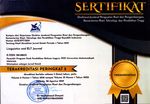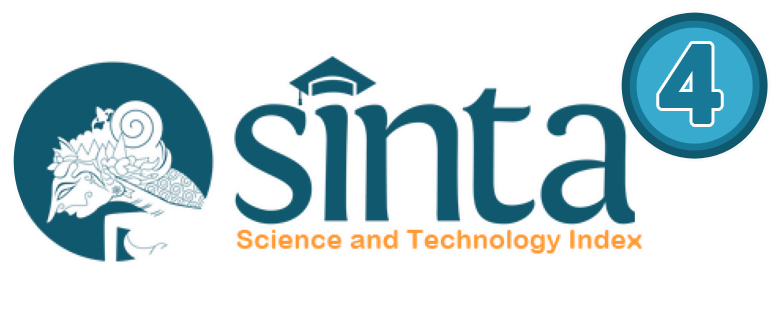Analyzing Teacher’s Speech Acts in a Classroom-Based English Learning Video
Abstract
This current research intends to identify and explain the forms of speech acts produced by the teacher in a learning video published on a YouTube channel. This research applies a qualitative descriptive method to respond to the problems studied. The findings indicate that among the various speech acts used, directive speech acts are more produced by the teacher in the video. It can be concluded from the results that 26 utterances produced by the teacher (25.2%) belong to representative speech acts, 52 utterances (50.5%) to directive speech acts, 2 utterances (2%) to commissive speech acts, 23 utterances (22.3%) to expressive speech acts. Directives are mostly produced by teachers inside the classroom while asking and questioning and become the most dominant directive speech acts produced by the teacher. It may happen because, in the learning video, the teacher gives students the opportunity to study a problem and try to solve the problem independently.
Keywords
Full Text:
PDFReferences
H. Pan, “On Enhancing Students’ Discourse Competence in Reading,” Journal of Higher Education Research, vol. 2, no. 1, Feb. 2021, doi: 10.32629/jher.v2i1.252.
C. J. Wagner and M. González-Howard, “Studying Discourse as Social Interaction: The Potential of Social Network Analysis for Discourse Studies,” Educational Researcher, vol. 47, no. 6, pp. 375–383, Aug. 2018, doi: 10.3102/0013189X18777741.
N. Van Han, “Contrast and Critique of Two Approaches to Discourse Analysis: Conversation Analysis and Speech Act Theory,” Advances in Language and Literary Studies, vol. 5, no. 4, pp. 155–162, Aug. 2014, doi: 10.7575/aiac.alls.v.5n.4p.155.
N. I. HL, S. Samsuddin, H. Yawan, and Y. Yuliati, “Exploring Directive Speech Acts in Elementary School Communication in Kolaka: Language Pedagogy Implications,” International Journal of Language Education, vol. 7, no. 2, Jun. 2023, doi: 10.26858/ijole.v7i2.44948.
B. Rais and S. Triyono, “Pragmatic Analysis of Speech Acts on The Video of Prabowo Vs Jokowi - Epic Rap Battles Of Presidency,” International Journal of Linguistics, Literature and Translation, vol. 2, no. 3, 2019, doi: 10.32996/ijllt.2019.2.3.17.
A. Nugroho and A. Rekha, “Speech Acts of Requests: A Case of Indonesian EFL Learners,” Journal of English Language Teaching and Linguistics, vol. 5, no. 1, p. 1, Apr. 2020, doi: 10.21462/jeltl.v5i1.371.
A. Hidayat, “Speech Acts: Force Behind Words ,” English Education: Jurnal Tadris Bahasa Inggris, vol. 9, no. 1, pp. 1–12, 2015.
N. Widyowati, “An Analysis of the Expressive Speech Acts Used By John And Savannah as the Main Characters in Dear John Movie,” JELLT, vol. 3, no. 1, pp. 49–57, 2019.
J. Flowerdew, Discourse in English Language Education. Routledge, 2012. doi: 10.4324/9780203080870.
A. Tauchid and D. Rukmini, “The Performance of Expressive Speech Acts as Found on Wayne Rooney’s Facebook,” English Education Journal, vol. 6, no. 1, pp. 1–10, 2016.
A. Husna, A. Rahman, and A. Abduh, “Analysis of Speech Acts Used by EFL Teachers in Class Interaction: A Case Study at High School Bosowa Makassar,” Pinisi, vol. 2, no. 5, pp. 177–184, 2022.
S. Agustina and B. Y. Cahyono, “Politeness and Power Relation in EFL Classroom Interactions: A Study on Indonesian Learners and Lecturers ,” International Journal of Language and Linguistics, vol. 3, no. 2, pp. 92–100, 2016.
M. Maros and N. S. Halim, “Alerters in Malay and English Speech Act of Request: A Contrastive Pragmatics Analysis,” 3L The Southeast Asian Journal of English Language Studies, vol. 24, no. 1, pp. 69–83, Mar. 2018, doi: 10.17576/3L-2018-2401-06.
J. R. Searle, Speech Acts: An Essay in the Philosophy of Language. Cambridge: Cambridge University Press, 1969.
M. Merdana, K. Seken, and A. D. I. J. P. N, “An Analysis of Speech Acts Produced by Elementary School Teachers and Students to Facilitate Teaching and Learning at Sdn 10 Pringgasela East Lombok,” Jurnal Pendidikan Bahasa Inggris, vol. 1, 2013.
D. Kartika, “Teacher’s and Students’ Speech Acts During Correctingsession of the Students’ English Worksat Sman 8 Bandar Lampung,” 2016. [Online]. Available: https://api.semanticscholar.org/CorpusID:152160831
A. W. Santosa and A. Kurniadi, “Speech Act Analysis of Teacher Talk in EFL Classroom,” Jurnal Penelitian Humaniora, vol. 21, no. 2, pp. 101–107, Aug. 2020, doi: 10.23917/humaniora.v21i2.9871.
J. W. Creswell, Research design : qualitative, quantitative, and mixed methods approaches, 4th ed. Singapore: Sage Publication, 2014.
F. Nugrahani, Metode Penelitian Kualitatif dalam Penelitian Pendidikan Bahasa. Solo: Cakra Books, 2014.
DOI: https://doi.org/10.31764/leltj.v11i2.20160
Refbacks
- There are currently no refbacks.
Copyright (c) 2023 Aisyah Bindiya, Sheila Agustina, Fika Megawati, Dian Novita, Vidya Mandarani

This work is licensed under a Creative Commons Attribution-ShareAlike 4.0 International License.
_____________________________________________________
Linguistics and ELT Journal
p-ISSN 2339-2940 | e-ISSN 2614-8633

LELTJ is licensed under a Creative Commons Attribution-ShareAlike 4.0 International License.
_____________________________________________________
LELTJ is abstracting & indexing in the following databases:
_____________________________________________________
LELTJ Editorial Office:













